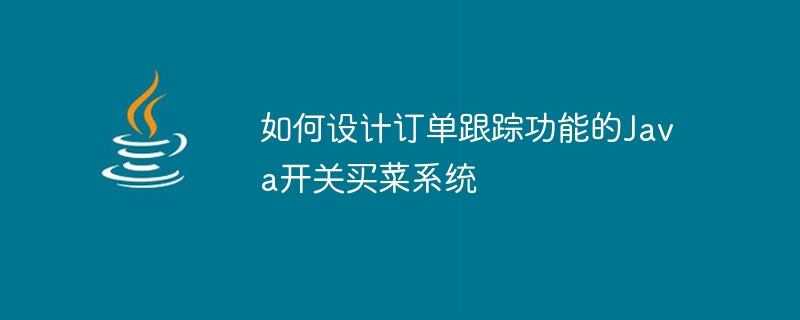

How to design a Java switch grocery shopping system with order tracking function
In modern society, with the development of the Internet, more and more people choose to purchase life online Supplies, including daily necessities. In order to meet the needs of users, many platforms have launched on-off grocery shopping systems, allowing users to easily select and order the ingredients they need and have them delivered. However, for users, order tracking has always been a focus. In this article, we will detail how to design a powerful order tracking system to improve user experience and satisfaction.
First, you need to establish a database to store order-related information. Tables in the database can include order ID, user ID, product list, delivery status and other information. In order to facilitate subsequent query and update operations, appropriate indexes can be set according to needs.
Secondly, a user interface needs to be designed to display order tracking information. The interface should be intuitive and easy to understand, and users can check the status of the order through the order number or other key information. The interface can display the detailed information of the order, such as order time, payment method, delivery address, etc., and also display the status of the current order, such as order placed, in progress, delivered, etc.
When designing the order tracking function, you can consider using message queues to achieve real-time status updates. The message queue can pass changes in order status to relevant components so that order tracking information can be updated in a timely manner. For example, when the order status changes, a message can be sent through the message queue. The message receiving end can update the order status based on the message and notify the user immediately.
In addition, in order to improve user satisfaction, an automatic reminder function can be designed. The system can send a text message or push notification to the user in advance based on the estimated delivery time to remind the user that the order is about to arrive. This will not only help users arrange their own time, but also reduce users’ dissatisfaction caused by not receiving orders in time.
In the process of order tracking, geographical location information can also be introduced. The system can obtain the real-time location information of the delivery person through the location of the delivery person's mobile phone and display it on the user interface. In this way, users can not only know the status of the order, but also track the location of the delivery person in real time to prepare for receipt in advance.
In addition, you can also consider using recommendation algorithms to recommend other related ingredients to increase the user’s purchase rate. When the user inquires about the order status, other products that may be of interest can be recommended by analyzing the user's purchase history and order details. This can improve the user's shopping experience and promote sales on the platform.
To sum up, designing a powerful order tracking system is crucial to improving user experience and satisfaction. Through reasonable database design, friendly user interface, real-time updated message queue and other technical means, users can keep track of the status of the order and track the progress of the delivery. At the same time, using methods such as geographical location information and recommendation algorithms can also provide users with a more convenient shopping experience.
The above is the detailed content of How to design a Java switch grocery shopping system with order tracking function. For more information, please follow other related articles on the PHP Chinese website!




